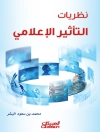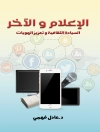Media Literacies: A Critical Introduction traces the history
of media literacy and grapples with the fresh challenges posed by
the convergent media of the 21st century. The book provides a
much-needed guide to what it means to be literate in today’s
media-saturated environment.
* Updates traditional models of media literacy by examining how
digital media is utilized in today’s convergent culture
* Explores the history and emergence of media education, the
digitally mediated lives of today’s youth, digital literacy,
and critical citizenship
* Complete with sidebar commentary written by leading media
researchers and educators spotlighting new research in the field
and an annotated bibliography of key texts and resources
Cuprins
Preface ix
1 What is Media Literacy? 1
Media Literacy 2.000 4
Natives and Aliens 7
Media Education has a History to Draw On 9
Media Education in the Twenty-First Century 12
2 Children’s Media Lives 17
Researching Young People in Mediated Environments 19
Getting Older Faster, Staying Younger Longer 20
Life Inside a Media Wonderland 23
Inequities and Parents’ Worries about Media Use 25
Media Concentration and the Big Four 28
Creating Cradle-to-Grave Consumers 30
Conclusion 33
3 Media as Public Pedagogy 35
Media as Threat 37
Media as a Form of Public Pedagogy 39
New Learning Horizons 41
Debating Dangerous Screens 43
The Merits of Television for Education 46
Children’s Learning Television 48
SIDEBAR: An Inconvenient Truth as public pedagogy 50
Public Service Announcements, Entertainment Education, and
Culture Jamming 53
Bricolage 58
SIDEBAR: Pre-teen girls and popular music 60
4 Media Literacy 101 63
A Demand for New Heuristics 65
Cultural Life 67
Production 68
SIDEBAR: Moral makeovers: Reality television and the good
citizen 69
Text 76
Audience 84
SIDEBAR: Children’s media encounters in contemporary India:
Leisure and learning 88
Cultural Life 92
SIDEBAR: The Simpsons: Not such a dumb show after all! 95
5 Media Production and Youth Agency 100
What Creative Work Adds to Media Education: Production as Praxis
101
SIDEBAR: Youth cultural production and creative economies
102
SIDEBAR: Assessing learning from practical media production at
an introductory level: The role of writing 106
What does Production Mean? 110
How is Production a Form of Agency? 112
SIDEBAR: Youth as knowledge producers in community-based video
in the age of AIDS 119
SIDEBAR: Youth Radio 126
6 Literacies: New and Digital 137
What does it Mean to be ‘Literate’ Today? 137
Expanded Literacies 139
New Literacies and New Ways of Thinking and Doing 141
Digital Literacies and ‘Top-Down’ Approaches 144
The Role of Learning Environments in Relation to Digital
Literacies 146
7 Media Literacy 2.0: Contemporary Media Practices and
Expanded Literacies 151
Media Literacy 2.0: The Seven Cs of Contemporary Youth Media
Practices 153
SIDEBAR: Learning in Second Life 156
SIDEBAR: Immersive advertising and children’s game spaces
164
SIDEBAR: Rethinking media literacy through video game play
175
SIDEBAR: Understanding remix and digital mashup 180
SIDEBAR: YAHAnet: Youth, the Arts, HIV and AIDS network 184
Conclusion 190
8 Critical Citizenship and Media Literacy Futures 191
Thinking, Judging, and Critical Citizenship 195
Last Words 200
References 203
Index 217
Despre autor
Michael Hoechsmann is Associate Professor and Chair of
Education Programs at Lakehead University, Orillia. He is co-author
of Reading Youth Writing: ‘New’ Literacies, Cultural
Studies and Education (2008), and the former Director of
Education of Young People’s Press, a youth-oriented non-profit news
service.
Stuart Poyntz is Assistant Professor in the School of
Communication at Simon Fraser University, and the former Director
of Education at Pacific Cinémathèque, Western Canada’s
leading film institute. He has published articles in the Review
of Education, Pedagogy and Cultural Studies,
Sociology Compass, the Journal of Curriculum
Theorizing, the Canadian Journal of Education, Taboo:
The Journal of Culture and Education, and various edited
collections.












